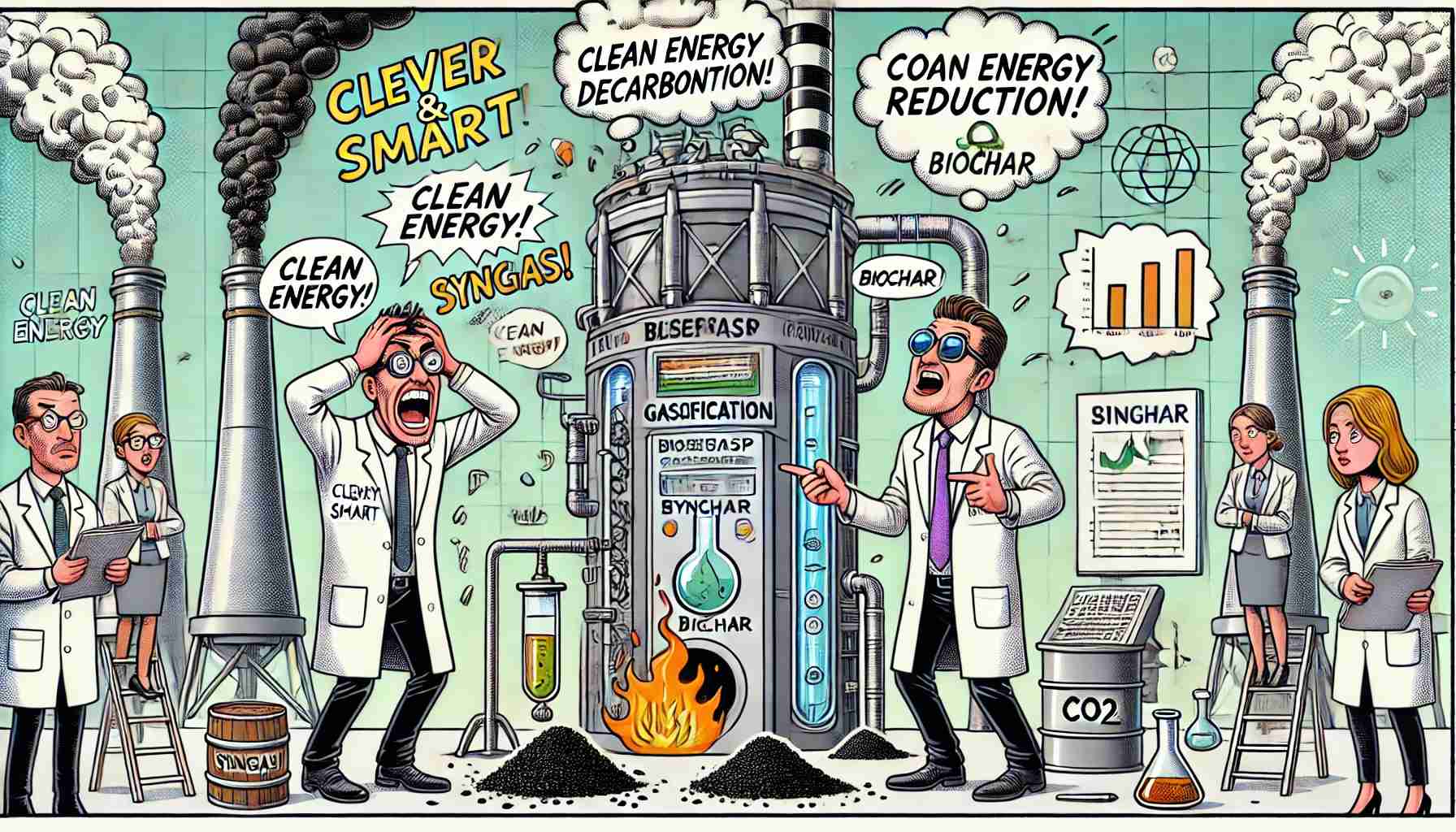 Circular Economy
Circular EconomyBiomass Gasification: A Key to Decarbonizing Energy-Intensive Industries
Summary
The paper examines the viability of biomass gasification as a technology for decarbonizing energy-intensive industries, specifically the steel sector, which significantly contributes to CO2 emissions. Biomass gasification, which converts biomass into syngas and biochar, is presented as a sustainable alternative to fossil fuels like coke and natural gas. The techno-economic analysis indicates that while the investment and operational costs of gasification are influenced by market factors, advancements in gasification technologies have improved efficiency and reduced byproduct tar.
The study found that large-scale operations (processing 10,000-20,000 tons of biomass per year) are economically feasible, with potential high returns and short payback periods. The dual output of syngas and biochar enhances gasification's competitiveness, especially when biochar's role as a negative emissions technology is factored into carbon credit schemes.
Sensitivity analysis emphasizes the impact of syngas quality, CO2 credit prices, and natural gas costs on the economic success of gasification projects. The paper suggests that governments and industry should establish supportive regulatory frameworks and incentives to promote biomass gasification adoption.
The paper concludes by highlighting the technology's transformative potential for industrial decarbonization, aligning with both environmental and financial goals. The growing focus on CO2 reduction and the benefits of carbon credit markets are poised to increase the attractiveness of biomass gasification further.
Open full article
Biomass Gasification: A Key to Decarbonizing Energy-Intensive Industries
The following article is a summary of the Scientific publication: “Techno-Economic Feasibility of Biomass Gasification for the Decarbonisation of Energy-Intensive Industries” delivered by the EU project CORALIS. And it is also a training article for the Enerwhizz, which is a fast-paced quiz on energy transition, greentec and renewables. Answer 5 YES-No questions in 45 seconds to earn cash coins and win prices delivered to your office or home. No registration, just play!
Check: https://enerwhizz.app/
The pressing need to curb carbon emissions has propelled industries worldwide to seek alternative energy solutions. Among these, biomass gasification has emerged as a promising technology, particularly for energy-intensive industries such as steel manufacturing. As the European Union (EU) mandates a 55% reduction in CO2 emissions by 2030, industries must adopt cleaner and more sustainable energy processes. Biomass gasification offers a viable alternative by producing syngas and biochar, which can replace fossil fuels like coke and natural gas. But how feasible is this technology? A techno-economic analysis sheds light on its potential as a game-changer in industrial decarbonization.
The Current Landscape of Industrial Decarbonization
Energy-intensive industries, such as steel production, remain among the highest carbon emitters, contributing approximately 7-8% of global CO2 emissions. The primary culprit is coke, a fossil fuel that provides the necessary high-temperature heat for steel manufacturing. Traditional steel production methods release between 1.4 and 2.2 tons of CO2 per ton of steel. Given the urgent need for decarbonization, alternative fuels are being explored.
Biomass gasification is a thermochemical process that converts solid biomass into syngas and biochar. Syngas, a mixture of carbon monoxide, hydrogen, and methane, has high heating power and can replace natural gas in industrial applications. Biochar, rich in carbon, can substitute coke in steelmaking processes. However, the financial viability of biomass gasification depends on factors such as investment costs, operational efficiency, and market conditions for fossil fuels and CO2 credits.
Innovations and Opportunities in Biomass Gasification
Biomass gasification technology provides industries with a flexible and scalable alternative to fossil fuels. Unlike direct biomass combustion, gasification allows for greater control over energy output and emissions. Recent advancements in gasification techniques have improved efficiency and reduced tar formation, a common byproduct that hinders widespread adoption.
A critical advantage of gasification is its dual output—syngas and biochar. Many gasification projects primarily focus on syngas production, but the economic model shifts favorably when biochar is included as a valuable byproduct. This dual approach makes gasification more competitive with conventional fuels. Moreover, biochar's potential as a negative emissions technology (NET) enhances its attractiveness under carbon credit schemes.
A study examining the economic feasibility of gasification plants analyzed various scales of operation, from 1,000 to 20,000 tons of biomass per year. The findings reveal that larger-scale operations offer better economic returns, with a 20,000-ton facility achieving a payback period of just three years and a net present value (NPV) of approximately 15 million euros. This makes biomass gasification an attractive mid-term investment for industries aiming to meet decarbonization targets.
Impact on the Future of Industrial Energy
Biomass gasification has the potential to revolutionize energy-intensive industries by reducing dependence on fossil fuels and lowering carbon emissions. As natural gas and coke prices remain volatile due to geopolitical factors, industries face increasing pressure to secure sustainable energy sources. Gasification provides a buffer against such uncertainties while also benefiting from CO2 credit incentives.
A sensitivity analysis of gasification’s economic feasibility highlights the importance of syngas quality, CO2 credit prices, and natural gas costs. A 133% increase in syngas energy content leads to a 363% rise in facility NPV, underscoring the need for process optimization. Similarly, rising CO2 credit costs significantly improve the financial outlook of gasification projects, making them even more attractive for long-term sustainability goals.
One of the most promising applications is in the steel industry, where biochar can directly replace coke in blast furnaces. Given the steel sector’s immense carbon footprint, transitioning to biomass-derived alternatives could yield substantial environmental and economic benefits. Moreover, industries can further optimize gasification by utilizing waste biomass, reducing feedstock costs while supporting circular economy principles.
The Road Ahead: Challenges and Call to Action
Despite its potential, biomass gasification faces several challenges. High initial investment costs and the need for technological expertise can deter adoption. Moreover, regulatory frameworks must evolve to support large-scale deployment. Governments and industry stakeholders should work together to establish incentives, such as subsidies and carbon credit markets, to encourage investment in biomass gasification.
For students and young professionals interested in energy and sustainability, biomass gasification presents an exciting field with numerous opportunities. Whether through research, policy advocacy, or industrial application, the next generation of professionals can drive innovation in this space. Staying informed about developments in renewable energy and actively participating in decarbonization projects will be crucial in shaping a sustainable future.
Conclusion
Biomass gasification stands out as a transformative technology capable of decarbonizing energy-intensive industries. By producing syngas and biochar, it offers a sustainable and economically viable alternative to fossil fuels. As industries strive to meet stringent CO2 reduction targets, gasification provides a scalable solution that aligns with both environmental and financial goals.
The economic analysis of various gasification scenarios highlights the importance of scale and efficiency in determining viability. Larger facilities, processing around 10,000-20,000 tons of biomass per year, emerge as the most feasible solutions, achieving rapid payback periods and significant cost savings. Moreover, the growing emphasis on CO2 reduction and carbon credit markets further enhances the attractiveness of biomass gasification.
As we move toward a low-carbon economy, embracing innovative solutions like biomass gasification will be critical. By investing in research, refining processes, and fostering collaboration between policymakers and industry leaders, we can unlock the full potential of this technology and drive meaningful progress toward a sustainable industrial future.
If you read the full article, you are now perfectly equipped to play and win EnerWhizz! And to have fun with friend leagues, leaderboards, missions and whizzers. And likely in your language as we are supporting 12 languages.
And if you found nuggets you want to have a deeper look at – check the source document, the Scientific publication: “Techno-Economic Feasibility of Biomass Gasification for the Decarbonisation of Energy-Intensive Industries” delivered by the EU project CORALIS.



